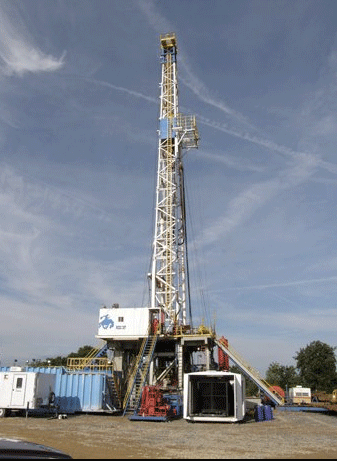Horizontal drilling
From Wikimarcellus
Horizontal drilling is a form of directional drilling. In order to tap the natural gas, typically a drill is sent down vertically a distance up to a mile or so underground and then turned at a ninety degree angle horizontally into the shale. By using horizontal drilling the drill bit can penetrates a much greater number of pockets of natural gas than it ever could with vertical drilling. On the average horizontal wells produce three to five times the amount of natural gas from vertical ones.
The shale tends to be located between approximately five and eight thousand feet below ground although it can be at even greater depth.
Horizontal drilling rigs can drill down up to 10,000 feet vertically to the Marcellus or other shale, and then turn horizontally for a few thousand additional feet. The horizontal portion of the well bore is referred to as a lateral. Well pads are around 5 acres with up to 6 horizontal wells stemming from the same pad. When multiple wells are drilled from the same pad, it is often referred to as pad drilling.
Horizontal wells are much more expensive to drill than vertical ones. Costs may run between $4 million and $7 million U.S. for a horizontal shale well. Vertical Marcellus shale or Trenton-Black River wells can be drilled for only $1-2 million U.S. Shallow vertical wells can be drilled for even a lot less money.
Reusable drilling rigs that cost up to $16 million apiece are generally used for horizontally drilling Marcellus shale wells. These rigs are larger-sized ones with 1,000 and 1,600 horsepower. Newer ones with crawlers can be moved around the well pad for drilling multiple wells. Range Resources has been one of the industry leaders in introducing new rig technology.
A business strategy sometimes employed is to drill a vertical well. This can be done fairly inexpensively to get some scientific data about the acreage, and then go back in later with a horizontal portion of the well using a larger rig.


